#italo-byzantine
Explore tagged Tumblr posts
Text

Title: Saint John the Evangelist (panel from a double-sided polyptych) Artist: Master of Saint Francis (Italian, fl. ca. 1260-1280) Date: 1270s (?) Genre: religious art Period: Middle Ages Movement: Italo-Byzantine Medium: tempera on panel Dimensions: 48.3 cm (19 in) high x 22.5 cm (8.8 in) wide Location: National Gallery of Art, Washington, DC
#art#art history#Master of Saint Francis#religious art#Christian art#Christianity#Catholicism#saints#St. John the Evangelist#Middle Ages#medieval#medieval art#Italo-Byzantine#polyptych#Italian art#13th century art#tempera on panel#National Gallery of Art
86 notes
·
View notes
Text
Italo-byzantine Crucifixion Fresco
Date: 10th century
This was a gift to Saint Monk Ivan Rilski and the Rila Monastery possibly from Orso_II_Participazio(18th Doge of Venice)

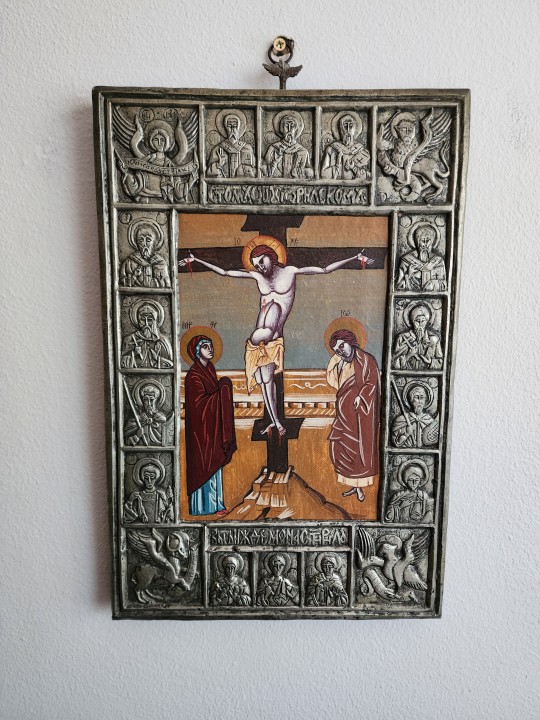
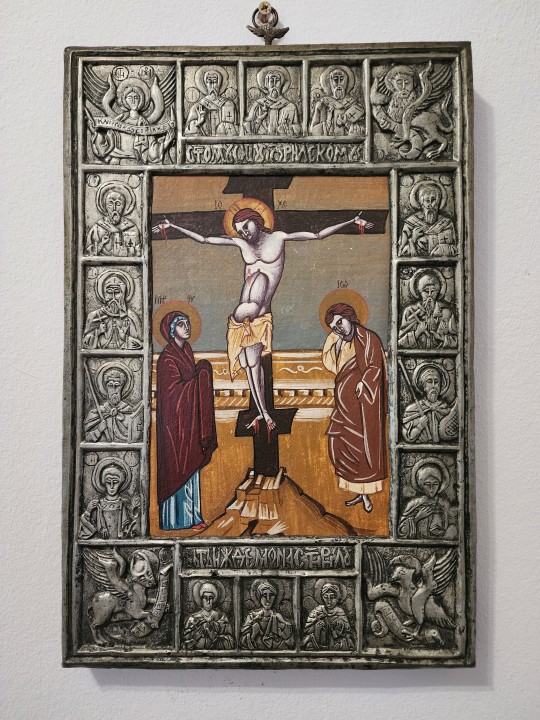
#art#italo-byzantine#medieval#10th century#museum#christie scheele#christie sigworth#christies#christie stevens#16th century#sotheby
1 note
·
View note
Text
Why do people specify Roman Catholic?
Many people - even amongst Roman Catholics ourselves - may not be aware of this, but the Catholic church is actually made up of 24 sui iuris (autonomous) churches, all in communion with the Bishop of Rome. The dominant church is, clearly, the Latin or Roman Church, which makes up the vast majority of Catholics: the Eastern churches number only 18 million of the 1.3 billion Catholics in total.
The next largest is the Syro-Malabar church, centred in the Indian state of Kerala, and descending from a native church present in the region since around the 8th century. The next largest is the Ukrainian church.
The defining feature of these churches is that they use a different Rite than that of the Roman church: West and East Syriac, Armenian, Alexandrian, Byzantine.
The other main feature is a national one:
Under the Byzantine Rite, the most diverse, you have 14 churches: Albanian, Belarusian, Bulgarian, Croatian and Serbian, Greek, Hungarian, Italo-Albanian, Macedonian, Melkite, Romanian, Russian, Ruthenian, Slovak, and Ukrainian.
Under the Alexandrian rite, there are 3: Coptic, Ethiopian, and Eritrean.
Under the West Syriac rite, there are 3: Maronite, Syriac, Syro-Malankara.
Under the East Syriac rite, there are 2: Chaldean and Syro-Malabar.
Under the Latin rite, there is one: Roman (there are some other rites within the Roman church, such as the Ambrosian rite practiced in Milan).
Under the Armenian rite, there is one: Armenian.
All of these churches, though autonomous to a degree, are fully and entirely Catholic, fully united with the Roman Catholic Church.
Some are much older than others: the Maronite church, for example, has been extant since some time in the mid first millennium; while the Eritrean church was only formed in 2015.
154 notes
·
View notes
Text

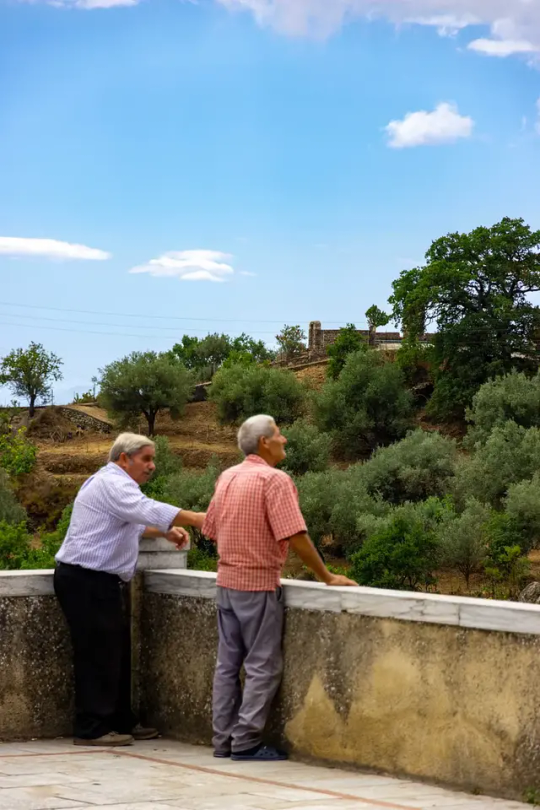
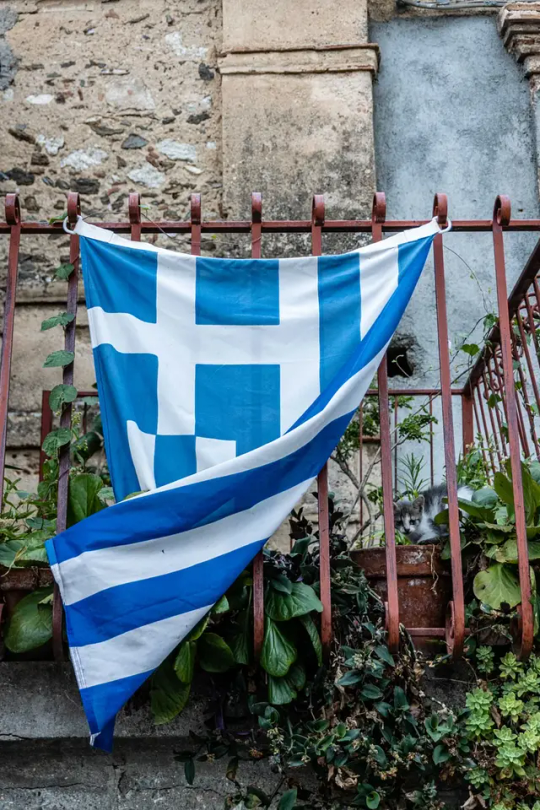
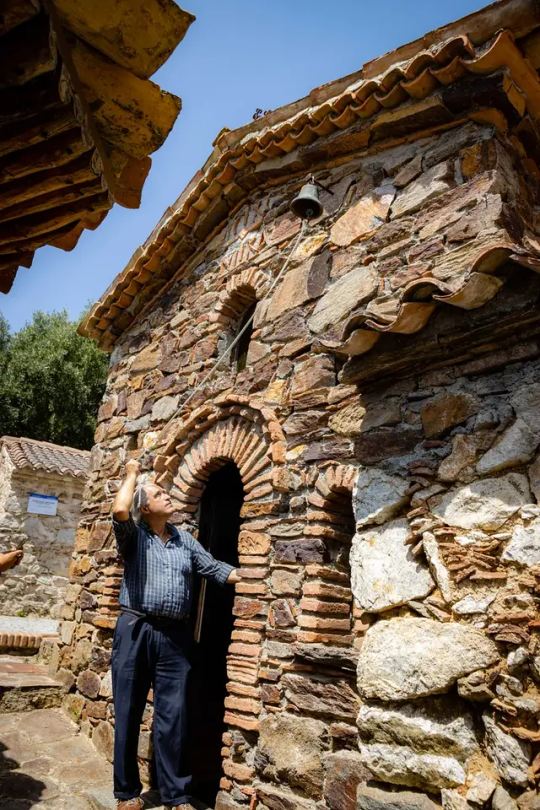

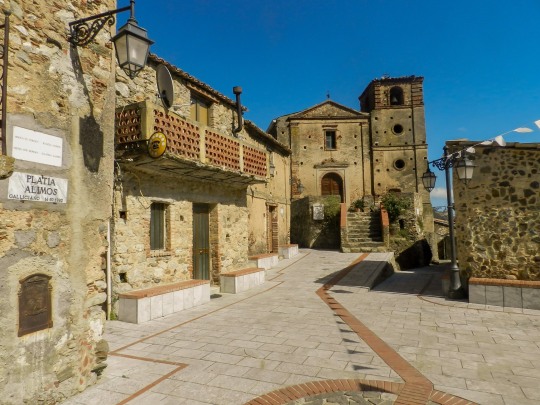

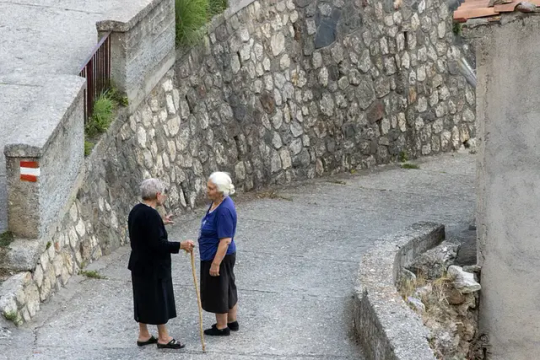
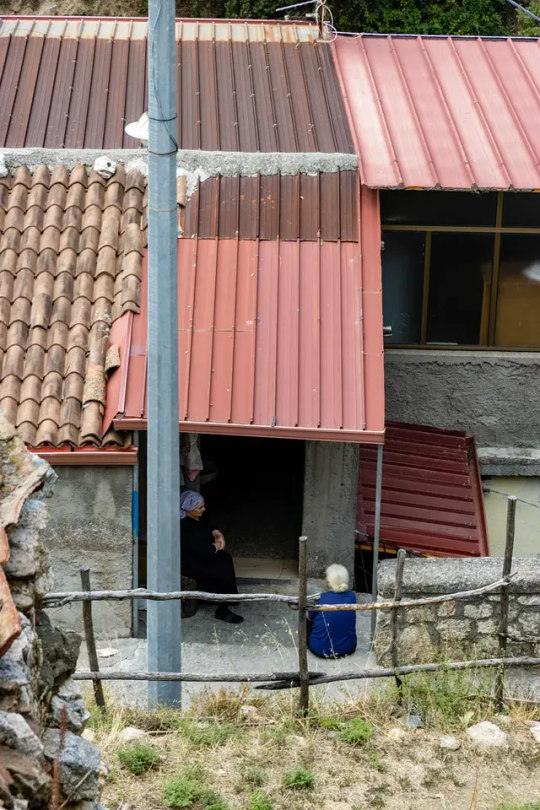

Gallicianò, Calabria, Italy
Gallicianò, in Calabria, is the only remaining original Greko-speaking settlement in the Aspromonte Mountains. Locals have not been forced to move or resettle on the coast like other Greko settlements.
Italian as we know it today was not always spoken throughout Italy. The Italian language did not become the staple language until well into the end of the 19th Century during the process of Italian unification, or the Risorgimento. Until then, the Italian peninsula was made up of Italo-Romance dialects and smaller minority languages that were differentiated by region and historical influences. Once unification was complete, the Tuscan dialect was ushered into power as the official language of the Italian nation. This became the beginning of the modern end of the Greek language in Calabria, or what it is known today as Griko.
WHY SHOULD IT MATTER?
There exists today a tiny enclave of Greek-speaking people in the Aspromonte Mountain region of Reggio Calabria that seem to have survived millennia...perhaps since the Ancient Greeks began colonizing Southern Italy in the 8th and 7th Centuries BC. Their language is called Griko. They survived empires, invasions, ecclesial schisms, dictators, nationalistic-inspired assimilation, and much more. Griko is a variety of the Greek language that has been separated from the rest of the Hellenic world for many centuries.
To help bring more perspective, Greek was the dominant language and ethnic element all throughout what we know today as Calabria, Puglia, and Eastern Sicily until the 14th Century. Since then, the spread of Italo-Romance languages,
along with geographical isolation from other Greek-speaking regions in Italy, caused the language to evolve on its own in Calabria. This resulted in a separate and unique variety of Greek that is different from what is spoken today in Puglia.
A BRIEF HISTORY
The struggle for the survival of Hellenism after antiquity is typically associated with Ottoman occupation in the Eastern Mediterranean, not the Italian peninsula. Few history books I read growing up ever mentioned any type of Greek history or presence in Italy after the glorious era of Magna Graecia. But to dig a little deeper means that we must look at what happened to this ethno-linguistic group after antiquity.
There are many theories or schools of thought regarding the origin of the Greko community in Calabria. Are they descendants of the Ancient Greeks who colonized Southern Italy? Are they remnants of the Byzantine presence in Southern Italy? Did their ancestors come in the 15th-16th Centuries from the Greek communities in the Aegean fleeing Ottoman invasion? The best answers to all of those questions are yes, yes, and yes. This means that history has shown a continuous Greek presence in Calabria since antiquity. Even though different empires, governments, and invasions occurred in the region, the Greek language and identity seemed to have
never ceased. Once the glorious days of Magna Graecia were over, there is evidence that shows that Greek continued to be spoken in Southern Italy during the Roman Empire. Once the Roman Empire split into East (Byzantine) and West, Calabria saw Byzantine rule begin in the 5th Century. This lasted well into the 11th Century and reinforced the Greek language and identity in the region as well as an affinity to Eastern Christianity.
What's even more fascinating is that Calabria was apparently a Byzantine monastic hub of sorts. There were over 1,500 Byzantine monasteries in Calabria and people today still remember and adore those saints. Even though Byzantine rule ended in Calabria in the 11th Century, the Greek language continued to be spoken while gradually declining in the region with the spread of Latin and a process of Catholicization. The modern-day commune of Bova may give some insight into the history of the language in the region. In subsequent centuries after Byzantine rule, Bova became the heart of Greek culture in Calabria as well as the seat of the Greek church in the region. It is important to note that the liturgical language of the region was Greek until 1572 when Bova was the last in the region to transition to Latin.
Not much is known of what took place between the end of the 16th Century and the Italian Risorgimento in the 19th Century, but there are a couple of details to mention. First, due to multiple invasions and piracy, much of Calabria's coastal population moved into the mountainous interior. According to Olimpia, the isolation and geography of the Greko communities in Calabria definitely worked to the advantage of preserving the language over centuries. We can also possibly conclude that occasional migrations of Greeks to Calabria from the Aegean could have taken place in the 16th and 17th Centuries in response to the Ottoman invasion. And according to Tito, there is even evidence that a 17th Century mayor of Bova wrote poems in Griko.
Even though the Greek language had already been in great decline since the departure of the Byzantine Empire in Southern Italy and the spread of Catholicism with Latin liturgy, the language seemed to have quietly survived several centuries in the mountains of Calabria.
TODAY
Once the Risorgimento finally took place, the modern Italian language finally arrived in Calabria at the end of the 19th Century. The Italian language that arrived was essentially the Tuscan dialect that was chosen as the national language. The Italian language has only been spoken in Calabria for around 100 years.
Due to the complexities of the Risorgimento and the new multifaceted Italian state (Northern Italy vs. Southern Italy), there was a new wave of mindsets that was ushered into Calabria and surrounding Southern Italian regions. This deeply affected the Greko community and language.
The shame and embarrassment of speaking Griko began in the 20th Century and it intensified during the Fascist movement. The mentality of 'we must be Italians' affected the way the Griko community raised their children.
Until the 1960s, there were no roads, electricity, or plumbing to most of the Greko villages. When the schools arrived, Italian was the taught language and Greko was learned at home. There was no government assistance back then for the Greko language. Italian government did not care about this language.
Furthermore, unlike other minority languages in Northern Italy, the Greko community was not located in a border region. The Italian government did not pay much attention to the Greko language or did not help preserve it also because its speakers did not pose a threat of secession or independence much like the Northern Italian minorities or the Basques and Catalans of Spain.
All of these factors have led to the current status of the Greko language as it remains in severe decline and near extinction.
Written by John Kazaklis
Photos by Giuseppe Cillis
Follow us on Instagram, @calabria_mediterranea
#Gallicianò#calabria#italy#italia#south italy#southern italy#mediterranean#greek#byzantine#byzantine art#griko#italian#landscape#italian landscape#europe#landscapes#mountains#mountainscape#mediterranean sea#seascape
32 notes
·
View notes
Text

Day 82: Italo-Byzantine architecture | Daily Venice for you!
#Venezia#Venice#Italia#Italy#art#Architecture#history#Travel Photography#water#bridge#river#photo#sky#old city#cityscpae#squares#murano#Burano#urban travel#photography#tarvel#Tourism#spring#summer#Europe#venetian carnival#travel#nature#landscape#city
45 notes
·
View notes
Note
Hello, could you tell us about Kalymnos and the history of weaving in Greece?
Hi! They are both broad topics, however I will do my best to summarize the most important and interesting information about them.
KALYMNOS
Kálymnos is an island which belongs in the Dodecanese, the southeasternmost islands of Greece. It is 26th in the list of the 50 largest Greek islands. It is the third most populous island of the Dodecanese.
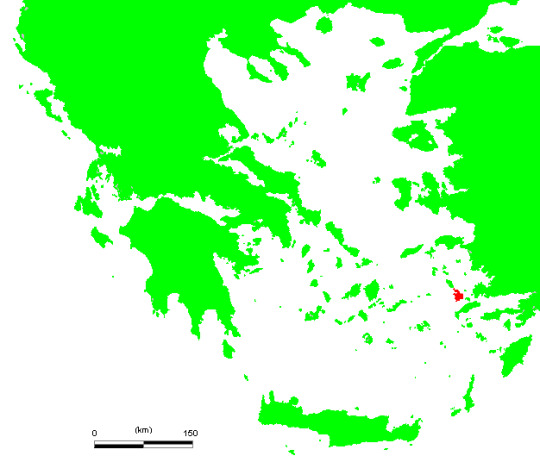
Kalymnos was first inhabited by Carians and Phoenicians. By 1100 BC the island was inhabited by Dorian Greeks. Kalymnos participated in the Trojan War and Homer mentions it with the name Kalydnae. In the late Archaic period, Kalymnos was a democracy. For a time, it was captured by the Persians. When liberated again, Kalymnos remained an ally of Athens, however it did not meddle much with the Peloponnesian war. Like all the other regions of Greece, it fell under Roman rule and was a part of the Byzantine Empire in the middle ages. In the 13th and 14th centuries it came under the control of Venice and the Order of Knights of the Hospital of Saint John of Jerusalem (Ιωαννίτες Ιππότες - Ioannites Ippotes in Greek) AKA the crusaders, just like most of the Dodecanese islands. The knights expanded and reinforced the original Byzantine fortress of the island which was there since the 10th century.
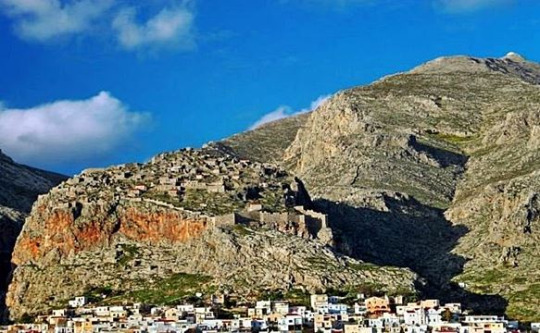
The ruins of the castle above the main town (Chora) of the island.
The Ottoman Turks attacked the island for about 80 years until they conquered it in 1522. Kalymnos was relatively privileged in the Ottoman Empire - islands were always more privileged compared to mainland Greek regions. In 1881, the Ottoman General Census found that the island had an overwhelming Greek majority (9,482 Greeks out of 9,716 overall population). In 1912, Italy conquered the island during the Italo-Turkish war and kept it until 1947, when, in the form of reparations after the Axis Occupation, Italy ceded the Dodecanese islands to Greece. The Dodecanese were the last region to get united with the Modern Greek state.
Kalymnos has a diverse, arid landscape. It is hilly and very rugged, while its coastline is very indented, forming numerous cliffs, caves and coves. This is why Kalymnos is an internationally popular rock climbing destination with more than 3,000 climbing routes. Kalymnos also has a small archipelagos of its own.
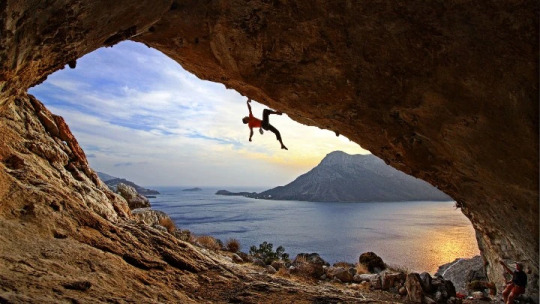
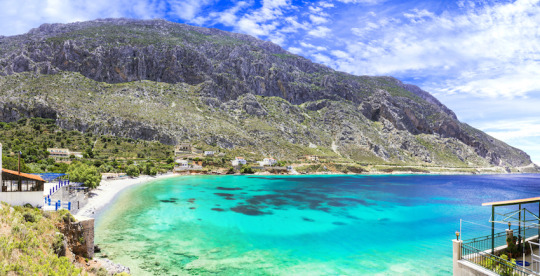
Kalymnos' economy is not based on agriculture, but rather tourism, traditional head scarf painting production and, most notably, sponge diving, which is the best known tradition of the island. Greece is the biggest exporter of natural sponges in the world, largely thanks to Kalymnian spongedivers and the island's seabed. Traditional sponge diving is extremely dangerous and potentially fatal and involves wearing a very heavy suit and holding your breath underwater for extended periods of time.
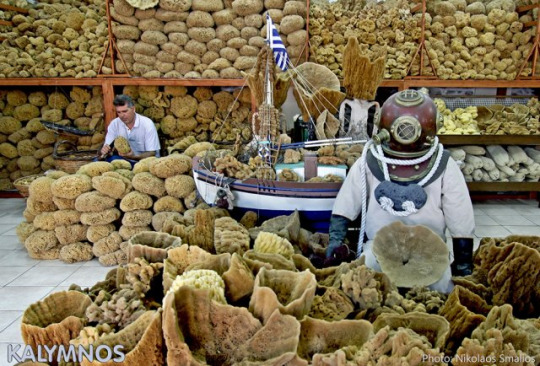

Artwork depicting the life of a Kalymnian spongediver © Francesco Zizola / NOOR
A folk song sang by Kalymnian sailors and divers has become popular around the world after French singer Dalida made a cover of it with romantic lyrics in 1970. The actual song however was sung by the ship's crew and it was meant to rouse a reaction from the spongediver so that if he struggled underwater, he would have the will to fight and manage to come to the water's surface. For example, the song makes references to the little joys of life, food, a comfortable sleep in a warm bed, sex, making a family, it mentions women (who could be real islanders the spongedivers were interested in), it mentions taking the City back (AKA Constantinople!), it mentions turning against the privileged lords of the island, it "threatens" the spongediver with unfairness ("you lads, I will give violets to you all, I will give two to each, but hey I am giving none to Yoryis (the spongediver)!"), it criticizes the spongediver's unresponsiveness (not pulling the rope) and implies his sister is with the crew, so anything that could potentially make a young man's blood flow and rouse a reaction from him and help him rise to the surface. I link the song below, performed by an actual crew from the island.
youtube
After the 60s a lot of Kalymnians emigrated to the USA and Australia, where they were usually employed in hard jobs, like constructing and painting bridges, used as they were in the demanding job of their island.

WEAVING IN GREECE
Weaving is a big, broad topic, especially because it was a well attested practice in Greece even in the Homeric Age. Therefore, and because the post is already long, I found some links that are very helpful and detailed and way more informative than whatever I would write here!
In this link here, there is a pdf about Byzantine weaving and textiles.
#greece#europe#facts#places#travel#islands#history#greek history#greek facts#kalymnos#sponges#climbing#rock climbing#weaving#arts and crafts#tradition#greek culture#anon#ask
32 notes
·
View notes
Text
Linguistic Map of Europe, 600 AD.

This interesting linguistic map of Europe around 600 AD illustrates the diverse and complex tapestry of languages and dialects spoken across the continent during this period.
The map highlights the extensive reach of Slavic languages in Eastern Europe, while the Western and Southern regions are dominated by Romance languages, including West Romance and Italo-Dalmatian, which evolved from Latin.
Old Norse and Anglo-Saxon occupy the northern territories, reflecting the early stages of Germanic language distribution.
In the Mediterranean and parts of North Africa, Koine Greek, Coptic and African Romance are prevalent, showcasing the influence of the Roman and Byzantine Empires.
The map also depicts the significant presence of Uralic languages such as Saami and North Finnic in the northernmost parts of Europe, and the Oghur and Common Turkic languages in the Eurasian steppes.
This linguistic diversity is a testament to the various migrations, conquests and cultural exchanges that shaped early medieval Europe.
#Linguistic Map#Europe#medieval europe#languages#dialects#slavic#romance#latin#germanic#koine greek#coptic#african romance#uralic
5 notes
·
View notes
Text
Artist Research-Gothic Movement Secondary Research
Further on Gothic art and architecture grew in Renaissance period, paintings and architecture were one of the first forms of art. Renaissance artist such as Giotto Di Bondone and Cimabue.
During the Renaissance period a transition from the Romanesque to the Gothic style of painting happened slowly in Italy. After the conquest of Constantinople in 1204 during the Fourth Crusade, influx of Byzantine paintings and mosaics increased greatly. This was partly the reason that Italy was strongly influenced by Byzantine art, especially in painting. The initial changes to the Byzantine-inspired Romanesque style was quite small, marked merely by an increase in Gothic ornamental detailing rather than a dramatic difference in the style of figures and compositions. Italian Gothic painting began to flourish around the second half of the 13th century with the contributions of Cimabue of Florence and Giotto Di Bondone.
Cimabue: Known at the time for Gothic works including ‘St John’. Cimabue was trained in the Byzantine style and was the first great Italian painters to break away from the Italo-Byzantine. Cimabue went on to paint in an emotive Gothic style. At the time Gothic style included using curves and linear perspective. Cimabue fellow student followed this art style, this student was Giotto.
Giotto Di Bondone: Giotto was an Italian painter of the Late Gothic period whose works are seen as an important prelude to the Renaissance. Unlike other artists of his time, Giotto produced accurate paintings and drawings from observation rather than Byzantine stylization. Giotto’s style represented a clear break with the Byzantine tradition, making use of foreshortening, chiaroscuro techniques, and depicting highly expressive figures. Some of Giotto's Gothic works include ‘The Arena Chapel’ and ‘Madonna and Child’.
Architecture-Cathedrals: The Czech Church of Bones: The Gothic church standing in Sedlec near the quaint Czech Republic city of Kutná Hora. Inside in the basement to bones of thousands of humans were bleached then ornately carved, and now artfully cover the inside of the church.
The origin of this Gothic Church begins with a local abbot who made a pilgrimage in the 13th century to Jerusalem and brought back some sacred soil to spread across the church cemetery. Word got out, making the Sedlec cemetery one of the region’s most popular places to be buried.
When the plague ravaged Europe in the 14th century, nearly 30,000 victims were added to the plots. The Crusades then brought 10,000 more casualties to rest in this cemetery.
When the community started to construct the Gothic church in the 15th century, many bones were moved and stacked in pyramids in the ossuary beneath the new building. Everything was left undisturbed until 1870, when the church hired a local woodcarver, Francis Rint, to create something from the staggering piles of bones.
After bleaching and carving the bones, he used them to decorate the holy space. Rint made chains of skulls to stretch across entryways. Chalices and crosses were constructed from hips and femurs. There's even a detailed family crest, thanking the aristocratic family that funded the initiative.
Notre Dame de Paris: The cathedral was initiated by Maurice de Sully, bishop of Paris, who came up with the idea of converting into a single building, on a larger scale, the ruins of the two earlier basilicas in 1160. The foundation stone was laid by Pope Alexander III in 1163, and the high altar was consecrated in 1189. The choir, the western facade, and the nave were completed by 1250, and porches, chapels, and other embellishments were added over the next 100 years.
Notre-Dame Cathedral consists of a choir and apse, a short transept, and a nave flanked by double aisles and square chapels. Its central spire was added during restoration in the 19th century, replacing the original, which had been completely removed in the 18th century because of instability. The interior of the cathedral is 130 by 48 meters in plan, and the roof is 35 meters high. Two massive early Gothic towers (1210–50) crown the western facade, which is divided into three stories and has its doors adorned with fine early Gothic carvings and surmounted by a row of figures of Old Testanment kings. The two towers are 68 meters high. At the cathedral’s east end, the apse has large clerestory windows added in 1235 and is supported by single arch flying buttress of the more daring Rayonnant Gothic style, especially notable for their boldness and grace. The cathedral’s three great rose windows alone retain their 13th-century glass. Notre-Dame Cathedral went through great damage throughout the centuries. After the French Revolution, it was rescued from possible destruction by Napoleon, who crowned himself emperor of the French in the cathedral in 1804. Notre-Dame underwent major restorations, adding Gargoyles by French architect Eugène-Emmanuel Viollet-le-Duc in the mid-19th century.
1 note
·
View note
Text
Events 12.30 (before 1940)
534 – The second and final edition of the Code of Justinian comes into effect in the Byzantine Empire. 999 – Battle of Glenmama: The combined forces of Munster and Meath under king Brian Boru inflict a crushing defeat on the allied armies of Leinster and Dublin near Lyons Hill in Ireland. 1066 – Granada massacre: A Muslim mob storms the royal palace in Granada, crucifies Jewish vizier Joseph ibn Naghrela and massacres most of the Jewish population of the city. 1419 – Hundred Years' War: Battle of La Rochelle. 1460 – Wars of the Roses: Lancastrians kill the 3rd Duke of York and win the Battle of Wakefield. 1702 – Queen Anne's War: James Moore, Governor of the Province of Carolina, abandons the Siege of St. Augustine. 1813 – War of 1812: British soldiers burn Buffalo, New York. 1816 – The Treaty of St. Louis between the United States and the united Ottawa, Ojibwa, and Potawatomi Indian tribes is proclaimed. 1825 – The Treaty of St. Louis between the United States and the Shawnee Nation is proclaimed. 1853 – Gadsden Purchase: The United States buys land from Mexico to facilitate railroad building in the Southwest. 1890 – Following the Wounded Knee Massacre, the United States Army and Lakota warriors face off in the Drexel Mission Fight. 1896 – Filipino patriot and reform advocate José Rizal is executed by a Spanish firing squad in Manila. 1896 – Canadian ice hockey player Ernie McLea scores the first hat-trick in Stanley Cup play, and the Cup-winning goal as the Montreal Victorias defeat the Winnipeg Victorias 6–5. 1897 – The British Colony of Natal annexes Zululand. 1902 – The Discovery Expedition under Robert Falcon Scott attained a Farthest South at 82°17′S in Antarctica. 1903 – A fire at the Iroquois Theater in Chicago, Illinois kills at least 605. 1905 – Former Idaho Governor Frank Steunenberg is assassinated at the front gate of his home in Caldwell. 1906 – The All-India Muslim League is founded in Dacca, East Bengal, British India (later Dhaka, Bangladesh). 1916 – Russian mystic and advisor to the Tsar Grigori Yefimovich Rasputin is murdered by a loyalist group led by Prince Felix Yusupov. His frozen, partially-trussed body was discovered in a Petrograd river three days later. 1916 – The last coronation in Hungary is performed for King Charles IV and Queen Zita. 1922 – The Union of Soviet Socialist Republics (USSR) is formed. 1927 – The Ginza Line, the first subway line in Asia, opens in Tokyo, Japan. 1935 – The Italian Air Force bombs a Swedish Red Cross hospital during the Second Italo-Abyssinian War. 1936 – The Flint sit-down strike hits General Motors.
0 notes
Text

SAINTS NOVEMBER 11
Bl. Kamen Vitchev, Byzantine-Slavonic Rite Roman Catholic priest. Arrested by the Communists, falsely charged with heading a “Catholic conspiracy” against the government. On November 11, 1952, he was executed by gunfire. Feastday: November 11
St. Cynfran, 5th century. A Welsh saint, founder, and confessor. He was the son of a local Welsh king. Cynfran founded a church in Gwynedd, and a local well was named for him.
St. Rhediw. Welsh saint. He is known principally because of the church dedicated to him in Gwynedd, Wales.
ST. BARTHOLOMEW, ABBOT OF GROTTAFERRATA was an Italo-Greek abbot at the monastery at Grottaferrata. Nov 11
St. Martin of Tours, Known as the “Apostle of Gaul,” Saint Martin of Tours began life as a soldier, and went on to become a Bishop. He is known especially for his devotion to the poor, as seen in an incident from his early life, when Saint Martin cut his cloak in half and gave part to a poor man suffering from the cold. He was Roman Catholic Bishop of Tours, whose shrine in France became a famous stopping-point for pilgrims on the road to Santiago de Compostela in Spain. Feastday: November 11 https://www.vaticannews.va/en/saints/11/11/st--martin--bishop-of-tours-.html
0 notes
Text
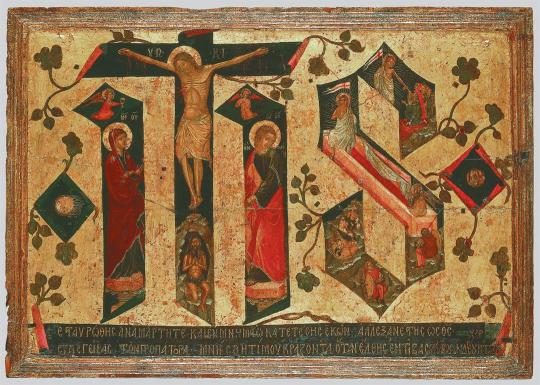
Jesus Savior of Humankind, attributed to the Cretan artist Andreas Ritzos (1421-92). The painting depicts the Crucifixion, Resurrection, and Harrowing of Hell within the letters I(ESUS) H(OMINUM) S(ALVATOR). Egg tempera on wood; 44.5 cm high x 63.5 cm wide. Now in the Byzantine and Christian Museum, Athens.
#art#art history#Andreas Ritzos#religious art#Christian art#Christianity#Catholicism#Byzantine Christianity#Cretan art#Italo-Cretan art#15th century art#egg tempera on wood#Byzantine and Christian Museum Athens
296 notes
·
View notes
Text

Art History Through AI:
“Christ Meets Black Jesus”
"Black Jesus, my foot. That's Ned the Wino" – Thelma Evans (Good Times)
Artistic depictions of Christ in pre-Renaissance art reveal a trans-formative journey from symbolic representation to dynamic narrative scenes. Significant examples include Giotto di Bondone's works, which marked a departure from the Italo-Byzantine style by introducing more humanistic qualities to his subjects, emphasizing emotional depth and realism. Additionally, the Nativity scenes, such as those by Duccio, showcase Christ's birth with a focus on the Virgin Mary's experience, often depicted with idealized beauty and maternal grace. Common characteristics of these artworks include the use of halos, typically rendered in gold leaf, surrounding the heads of Christ and saints, serving as divine markers of holiness. Furthermore, the shift from the beardless, youthful representations of early Christian art to the bearded, authoritative images seen in later works, reflects evolving theological perspectives and cultural influences, establishing a recognizable iconography that endures to this day. These elements together illustrate the narrative intricacies and devotional functions of Christ's depictions in this artistic epoch.
The portrayal of Christ in pre-renaissance European art underwent significant theological changes influenced by evolving understandings of his humanity and divinity. In late medieval and Renaissance Italy, there was a pronounced emphasis on the humanity of Christ, leading to representations that centered on his earthly experiences, particularly his birth and death, which reflect key aspects of Christian doctrine such as the Incarnation and resurrection. This perspective contrasted earlier traditions, which often depicted the miraculous elements of Christ's life, such as his miracles and teachings, showcasing a shift towards a more relatable and human representation of the Savior. Additionally, the official practices of the Western Church, starting from Pope Gregory the Great's time, valued images as both instructional and devotional tools, driving demand for scenes from Christ's life in various artistic forms. Ultimately, these theological developments not only enriched the iconography of Christ’s narrative but also encouraged artistic creativity within the constraints of traditional Church dictates, forming a unique blend of innovation and reverence in pre-renaissance European art. With cultural norms and spiritual needs ever changing, the artistic depictions of Christ can be controversial.
The modern debate surrounding the depiction of Jesus as a fair-skinned figure is deeply intertwined with historical and cultural contexts, raising issues of representation and identity. Critics argue that the portrayal of Jesus predominantly as white reinforces harmful narratives of white supremacy and undermines the historical reality of his Middle Eastern heritage, which is likely to have included a darker complexion. This discourse is reflected in various cultural mediums, including the Season One episode of the television show "Good Times," titled "Black Jesus," where J.J. Evans’ painting of a Black Jesus, which J.J. used the character of Ned the Wino as inspiration, serves as a symbol of hope and faith for his family amid struggles. The episode illustrates the significance of diverse representations of Jesus as a means of affirming the value and experiences of marginalized communities. This ongoing discussion highlights the need for more inclusive and accurate portrayals of Christ, urging a departure from traditional depictions that may not align with historical contexts or the experiences of diverse populations.
Artists utilizing generative AI to create images can draw inspiration from pre-Renaissance characteristics found in European depictions of Christ by focusing on stylistic elements such as abstraction, symbolism, and religious motifs. To effectively prompt AI tools, artists might incorporate keywords like "iconography," emphasizing the use of symbols in religious contexts, as well as "flatness" to suggest a two-dimensional rather than realistic portrayal. Additionally, terms like "golden halo" and "sacred geometry" can evoke the transcendental aspects prevalent in early Christian art. By using phrases like "spiritual representation" and "divine light," artists can guide the generative process to reflect these historical influences, ensuring that their outputs resonate with the spiritual and artistic themes of the pre-Renaissance period while leveraging modern technology.
0 notes
Text

a bit from Last Judgment mosaic at the Baptistery of Florence Cathedral. Mosaic on the vault (Detail of the Hell Scene).
by Coppo di Marcovaldo | a Florentine painter in the Italo-Byzantine style, active in the middle of the thirteenth century, whose fusion of both the Italian and Byzantine styles had great influence on generations of Italian artists.
1 note
·
View note
Text
On this day in Wikipedia: Tuesday, 26th September
Welcome, Bienvenue, Benvenuta, שלום 🤗 What does @Wikipedia say about 26th September through the years 🏛️📜🗓️?

26th September 2019 🗓️ : Death - Jacques Chirac Jacques Chirac, French politician, President of France (b. 1932) "Jacques René Chirac (UK: , US: , French: [ʒak ʁəne ʃiʁak] ; 29 November 1932 – 26 September 2019) was a French politician who served as President of France from 1995 to 2007. Chirac was previously Prime Minister of France from 1974 to 1976 and from 1986 to 1988, as well as Mayor of Paris from 1977..."

Image licensed under CC BY 4.0? by Christian Lambiotte
26th September 2016 🗓️ : Death - Toughie (frog) Toughie, last known Rabbs' fringe-limbed treefrog (h. fl. 2005) "Toughie was the last known living Rabbs' fringe-limbed treefrog. The species, scientifically known as Ecnomiohyla rabborum, is thought to be extinct, as the last specimen—Toughie—died in captivity on September 26, 2016. ..."

Image licensed under CC BY 2.0? by Brian Gratwicke from DC, USA
26th September 2013 🗓️ : Death - Mario Montez Mario Montez, Puerto Rican-American actor (b. 1935) "René Rivera, (July 20, 1935 – September 26, 2013), known professionally as Mario Montez, was one of the Warhol superstars, appearing in thirteen of Andy Warhol's underground films from 1964 to 1966. He took his name as a male homage to the actress Maria Montez, an important gay icon in the 1950s and..."
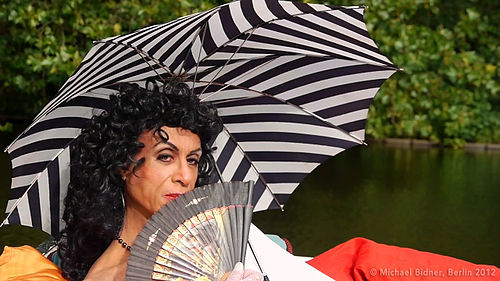
Image licensed under CC BY-SA 3.0? by Michael Bidner
26th September 1973 🗓️ : Event - Concorde Concorde makes its first non-stop crossing of the Atlantic in record-breaking time. "The Aérospatiale/BAC Concorde () is a retired Franco-British supersonic airliner jointly developed and manufactured by Sud Aviation (later Aérospatiale) and the British Aircraft Corporation (BAC). Studies started in 1954, and France and the UK signed a treaty establishing the development project on..."

Image licensed under CC BY-SA 3.0? by Eduard Marmet
26th September 1923 🗓️ : Event - Occupation of the Ruhr The German government accepts the occupation of the Ruhr. "The Occupation of the Ruhr (German: Ruhrbesetzung) was a period of military occupation of the Ruhr region of Germany by France and Belgium between 11 January 1923 and 25 August 1925. France and Belgium occupied the heavily industrialized Ruhr Valley in response to Germany defaulting on reparation..."
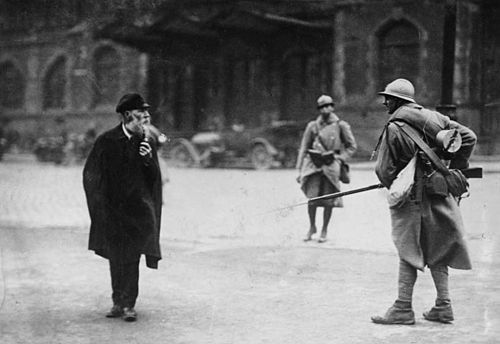
Image licensed under CC BY-SA 3.0 de? by
UnknownUnknown
26th September 1820 🗓️ : Birth - Ishwar Chandra Vidyasagar Ishwar Chandra Vidyasagar, Indian philosopher, painter, and academic (d. 1891) "Ishwar Chandra Bandopadhyay CIE, popularly known as Ishwar Chandra Vidya Sagar (Bengali: ঈশ্বরচন্দ্র বিদ্যাসাগর, lit. 'Vidyasagar, the Sea of Knowledge)'; (26 September 1820 – 29 July 1891), was an Indian educator and social reformer of the nineteenth century. His efforts to simplify and modernise..."
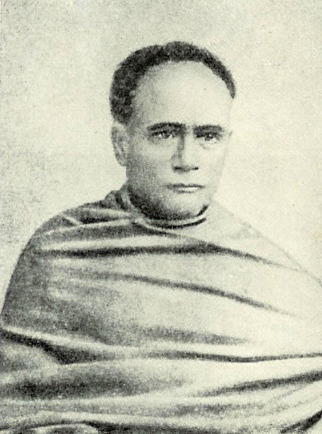
Image by Unknown authorUnknown author
26th September 🗓️ : Holiday - Christian feast days: Nilus the Younger "Nilus the Younger, also called Neilos of Rossano (Italian: Nilo di Rossano, Greek: Όσιος Νείλος, ο εκ Καλαβρίας; 910 – 27 December 1005) was a Griko monk and abbot from Calabria. He was the founder of Italo-Byzantine monasticism in southern Italy. He is venerated as a saint in the Eastern Orthodox..."
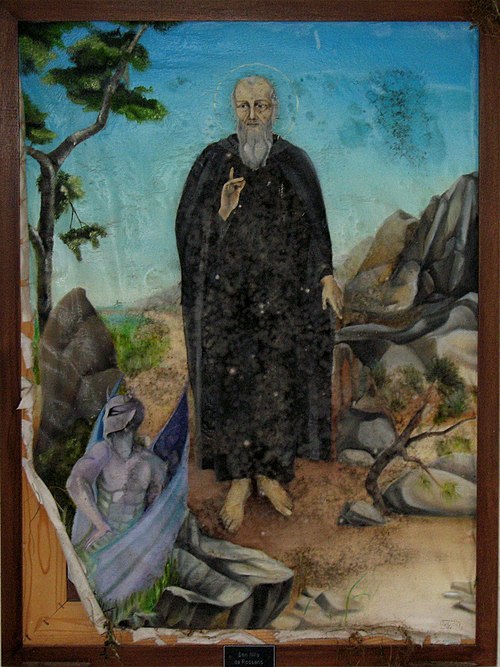
Image by GJo
0 notes
Text
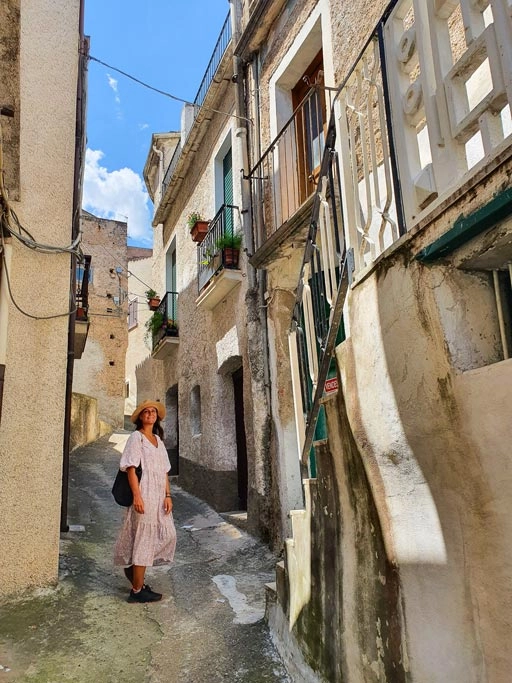
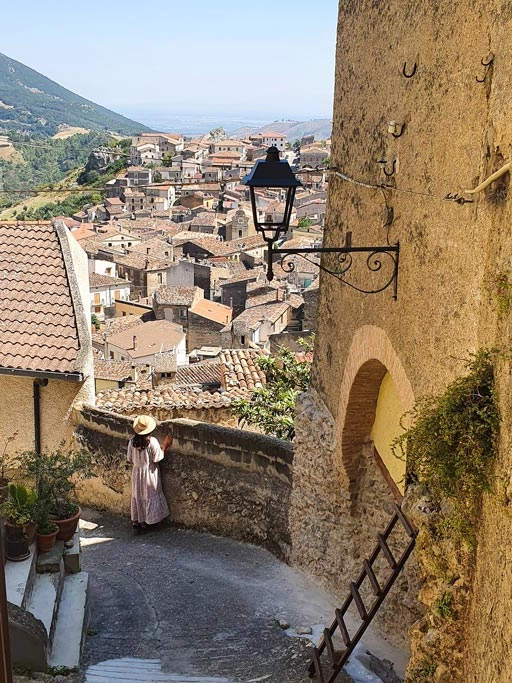


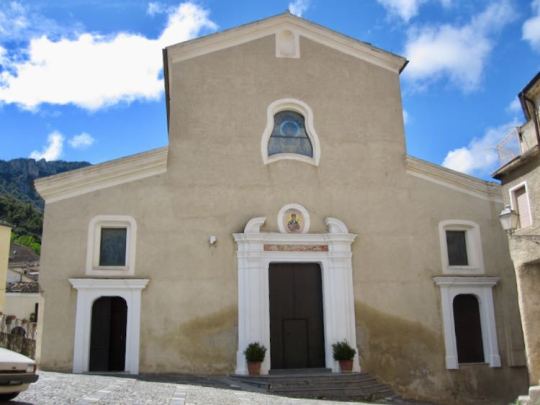
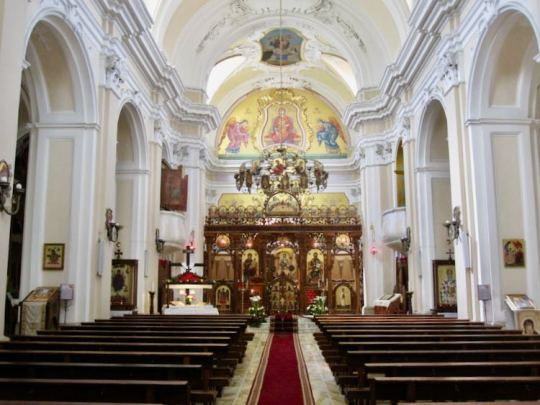


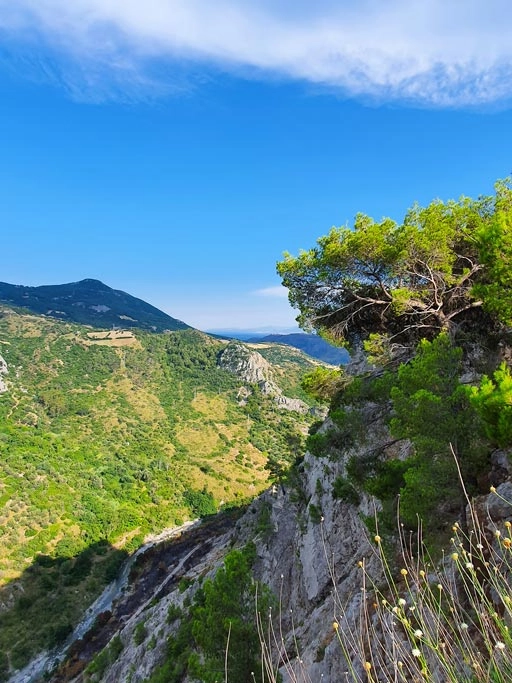
Civita, Calabria, Italy
Civita is hilltown town in Calabria in the heart of the Pollino National park, in Southern Italy's Calabria.
In Civita, Calabria, the history centers on an Albanian community fleeing from the Turks. While a precise arrival date is not known, the first Albanian explorers most likely came to the area in the 1470s. The “new” arrivals brought their language and culture with them, settling throughout the Pollino Mountains.
In keeping with Civita’s history, the local religion and village architecture reflect Arbëreshe culture. Just off the main piazza stands the Italian-Albanian Mother Church dedicated to Santa Maria Assunta. Its parishioners follow the Byzantine rite as part of the Eparchy of Lungro, an Italo-Albanian diocese in Calabria, subject to the Holy See. The Baroque structure features many elements of the Byzantine church, such as the beautiful iconostasis in walnut and olivewood, numerous icons and frescos.
Civita maintains its original layout, with neighborhoods of old two-story stone houses with large fireplaces situated along narrow lanes. Interestingly, the facades of several homes resemble faces, with a long chimney for the nose and windows for eyes.
The chimney stacks are another characteristic of the village, each unique design giving that personal touch to the habitation.
This village of fewer than 1,000 also boasts the dramatic natural setting of northern Calabria’s Pollino Mountains, part of Italy’s largest national park. One of Civita’s highlights is the Gole del Raganello, a deep canyon carved by the Raganello River, which flows to the Ionian Sea. From Civita’s enviable position of 450 meters (1,480 feet), views of the expansive river valley extend all the way to the sea!
From the oldtown, you can hike down the side of the canyon or take a jeep to the Ponte del Diavolo. This Devil’s Bridge has the familiar tale of having been constructed by the devil in exchange for the life of the first soul who crosses it. Being cleverer than the diavolo himself, the local landowner who made the pact with the devil tricked him by sending a sheep, instead of a person, over the new structure.
Photos by Un Trolley per Due and Calabria: The Other Italy
Follow us on Instagram, @calabria_mediterranea
#civita#calabria#italy#italia#south italy#southern italy#mediterranean#italian#europe#landscape#italian landscape#italian girls#italian girl#girl#girls#mountains#mountain#mountainscape#village#villages#italian landscapes#nature#nature photography#Arbëresh#albanian#chimney
23 notes
·
View notes
Text

The Patriarchal Cathedral Basilica of Saint Mark, commonly known as St Mark's Basilica, is the cathedral church of the Roman Catholic Archdiocese of Venice, northern Italy. It is the most famous of the city's churches and one of the best known examples of Italo-Byzantine architecture…
Please follow link for full post
Art,Paintings,Canals,Gondola,Mark,biography,History,Venice,fine art Venice,Zaidan,Italy,BASILICA,Artists,footnotes,Saint,
01 Painting of the Canals of Venice, Rubens Santoro's Venetian Canal, with Saint Mark's Basilica in the Distance, with footnotes #116
https://venicecanals.blogspot.com/2020/02/01-painting-of-canals-of-venice-by.html
0 notes